Xiaoxia Li
XiYan-SQL: A Multi-Generator Ensemble Framework for Text-to-SQL
Nov 13, 2024
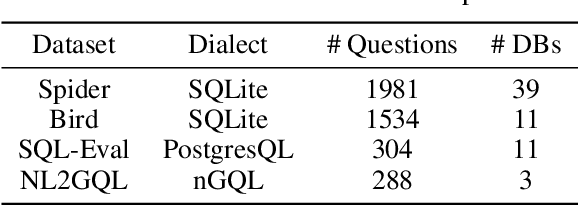
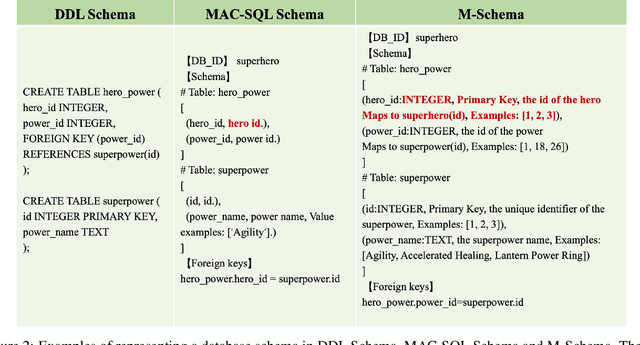
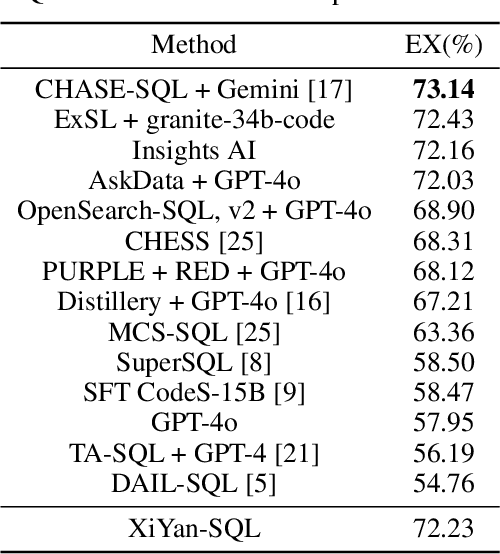
Abstract:To tackle the challenges of large language model performance in natural language to SQL tasks, we introduce XiYan-SQL, an innovative framework that employs a multi-generator ensemble strategy to improve candidate generation. We introduce M-Schema, a semi-structured schema representation method designed to enhance the understanding of database structures. To enhance the quality and diversity of generated candidate SQL queries, XiYan-SQL integrates the significant potential of in-context learning (ICL) with the precise control of supervised fine-tuning. On one hand, we propose a series of training strategies to fine-tune models to generate high-quality candidates with diverse preferences. On the other hand, we implement the ICL approach with an example selection method based on named entity recognition to prevent overemphasis on entities. The refiner optimizes each candidate by correcting logical or syntactical errors. To address the challenge of identifying the best candidate, we fine-tune a selection model to distinguish nuances of candidate SQL queries. The experimental results on multiple dialect datasets demonstrate the robustness of XiYan-SQL in addressing challenges across different scenarios. Overall, our proposed XiYan-SQL achieves the state-of-the-art execution accuracy of 89.65% on the Spider test set, 69.86% on SQL-Eval, 41.20% on NL2GQL, and a competitive score of 72.23% on the Bird development benchmark. The proposed framework not only enhances the quality and diversity of SQL queries but also outperforms previous methods.
Semantic Mirror Jailbreak: Genetic Algorithm Based Jailbreak Prompts Against Open-source LLMs
Feb 27, 2024Abstract:Large Language Models (LLMs), used in creative writing, code generation, and translation, generate text based on input sequences but are vulnerable to jailbreak attacks, where crafted prompts induce harmful outputs. Most jailbreak prompt methods use a combination of jailbreak templates followed by questions to ask to create jailbreak prompts. However, existing jailbreak prompt designs generally suffer from excessive semantic differences, resulting in an inability to resist defenses that use simple semantic metrics as thresholds. Jailbreak prompts are semantically more varied than the original questions used for queries. In this paper, we introduce a Semantic Mirror Jailbreak (SMJ) approach that bypasses LLMs by generating jailbreak prompts that are semantically similar to the original question. We model the search for jailbreak prompts that satisfy both semantic similarity and jailbreak validity as a multi-objective optimization problem and employ a standardized set of genetic algorithms for generating eligible prompts. Compared to the baseline AutoDAN-GA, SMJ achieves attack success rates (ASR) that are at most 35.4% higher without ONION defense and 85.2% higher with ONION defense. SMJ's better performance in all three semantic meaningfulness metrics of Jailbreak Prompt, Similarity, and Outlier, also means that SMJ is resistant to defenses that use those metrics as thresholds.
Towards Loose-Fitting Garment Animation via Generative Model of Deformation Decomposition
Dec 22, 2023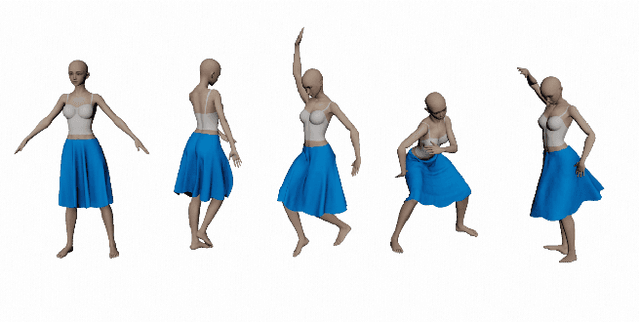
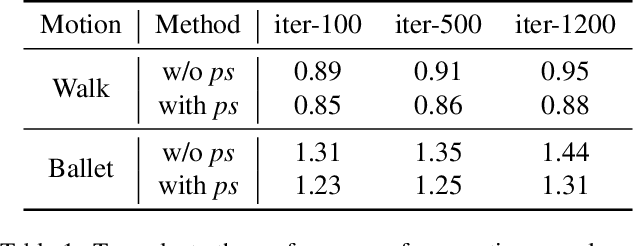
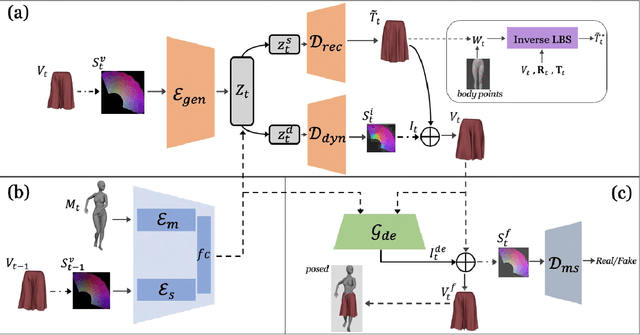

Abstract:Existing data-driven methods for garment animation, usually driven by linear skinning, although effective on tight garments, do not handle loose-fitting garments with complex deformations well. To address these limitations, we develop a garment generative model based on deformation decomposition to efficiently simulate loose garment deformation without directly using linear skinning. Specifically, we learn a garment generative space with the proposed generative model, where we decouple the latent representation into unposed deformed garments and dynamic offsets during the decoding stage. With explicit garment deformations decomposition, our generative model is able to generate complex pose-driven deformations on canonical garment shapes. Furthermore, we learn to transfer the body motions and previous state of the garment to the latent space to regenerate dynamic results. In addition, we introduce a detail enhancement module in an adversarial training setup to learn high-frequency wrinkles. We demonstrate our method outperforms state-of-the-art data-driven alternatives through extensive experiments and show qualitative and quantitative analysis of results.
JCDNet: Joint of Common and Definite phases Network for Weakly Supervised Temporal Action Localization
Mar 30, 2023Abstract:Weakly-supervised temporal action localization aims to localize action instances in untrimmed videos with only video-level supervision. We witness that different actions record common phases, e.g., the run-up in the HighJump and LongJump. These different actions are defined as conjoint actions, whose rest parts are definite phases, e.g., leaping over the bar in a HighJump. Compared with the common phases, the definite phases are more easily localized in existing researches. Most of them formulate this task as a Multiple Instance Learning paradigm, in which the common phases are tended to be confused with the background, and affect the localization completeness of the conjoint actions. To tackle this challenge, we propose a Joint of Common and Definite phases Network (JCDNet) by improving feature discriminability of the conjoint actions. Specifically, we design a Class-Aware Discriminative module to enhance the contribution of the common phases in classification by the guidance of the coarse definite-phase features. Besides, we introduce a temporal attention module to learn robust action-ness scores via modeling temporal dependencies, distinguishing the common phases from the background. Extensive experiments on three datasets (THUMOS14, ActivityNetv1.2, and a conjoint-action subset) demonstrate that JCDNet achieves competitive performance against the state-of-the-art methods. Keywords: weakly-supervised learning, temporal action localization, conjoint action
 Add to Chrome
Add to Chrome Add to Firefox
Add to Firefox Add to Edge
Add to Edge